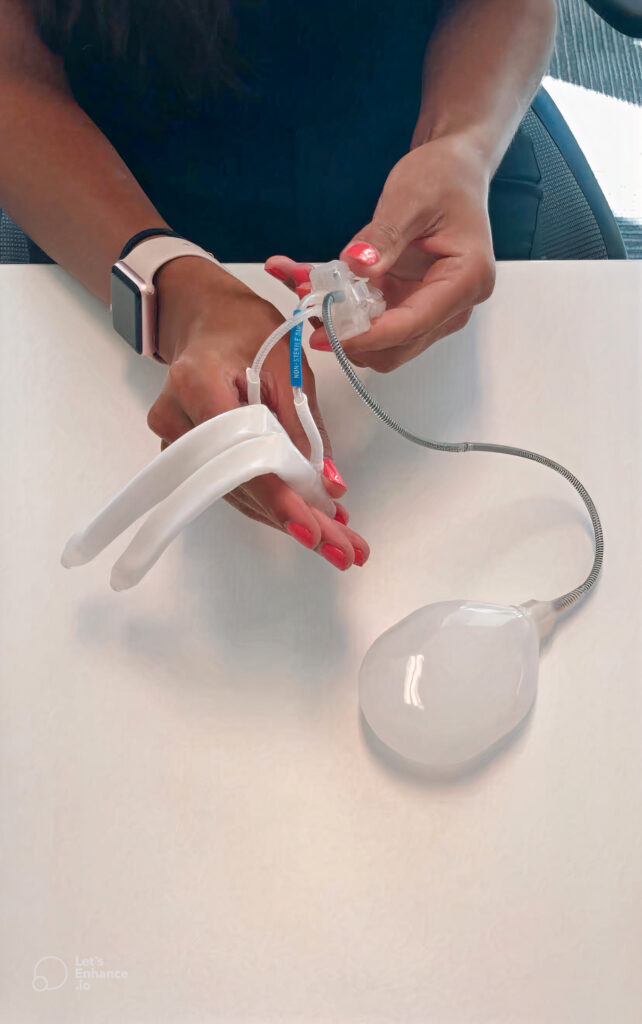
16 Aug The Complete Guide to Penile Prosthesis
Dowload the PDF version of this guide
Our team at Dr Paul Cozzi has been treating Erectile Dysfunction (ED) for over 20 years and in that time we have seen a number of advancements in the field, with one of the more compelling options being Internal Penile Prosthesis (IPP). In our experience, Penile Prosthesis can be one of the most effective long term solutions for ED – particularly when other more conventional methods have already been eliminated. We have written this guide to try and help patients when researching their options regarding ED.

What does a Penile Prosthesis do?
Put simply, An IPP inflatable penile prosthesis is a three-piece inflatable device implanted in to the penis to support an erection for as long as desired. It effectively allows the user to generate and maintain an erection when needed and then reverse this process when required. The device is easy to use and discrete, it has no visible components once inserted.
Who is a Penile Prosthesis for?
We would typically recommend an IPP to men who are suffering from chronic erectile dysfunction (commonly known as impotence). It is also important to note that, although highly successful an IPP (like all surgical procedures) carries risk and we would recommend that you try less invasive options first.
How does the device work?
- The pump is contained in the scrotum. By squeezing and releasing the pump the device moves fluid from the reservoir into the cylinders. The cylinders are inflated with the fluid and mimic an erection. The cylinders are rigid when inflated.
- To deflate the device simply push the button on the pump. This will move the fluid back into the reservoir leaving the penis once again soft and flaccid.


How much does it cost?
The price of a Penile Prosthesis is dependent on a number of factors which are summarized below:
- Surgeon’s fees are generally around $3-5k which includes an assistant if required.
- Hospital fees are completely covered if the patient carries appropriate private health insurance (PHI) cover.
- The prostheses its self is fully rebated with the appropriate level of PHI.
- For uninsured patients the device cost would be $10-13,000 depending on the brand and also the hospital the procedure is done at.
- Anaesthetists fees will vary from one anaesthetist to the next. You will be directed on how to obtain a quote from the assigned anaesthetist via your surgeon prior to surgery.
If the patient is uninsured, we recommend obtaining an estimation of fees from the hospital prior to surgery. This estimate of fees can be obtained via the surgeons’ rooms on the patient’s behalf. Alternatively, the patient can request it for themselves. Note: Hospital fees will vary from hospital to hospital for uninsured patients.
What rebates (Medicare) are available?
The Medicare rebate for this procedure is between $1000-$1500
How long does it last?
The lifetime of an IPP depends entirely on how the device is used (ie how often). As a general guide we have observed that 5-10 years is reasonable with some men still happy with their devices’ function 20 years after the initial procedure.
Do they increase size?
IPP’s do not increase natural length but implants that provide lengthening properties can assist in addressing the penile shortening that some patients may experience after prostate cancer treatment.
Can a woman tell if a man has a penile implant?
Most patients report that they are very happy with the natural look and feel of the penile implant when flaccid or erect. Additionally – many partners of patients with IPPs report they wouldn’t know their partner had an implant if they had not known about the surgery.
Will a penile prosthesis affect ejaculation?
Generally an IPP does not interfere with ejaculation or orgasm. This is considered a minimally invasive surgery.




No Comments